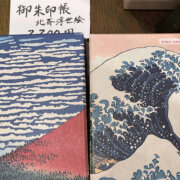Hiking The Nakasendo Trail
During the Edo period, the Nakasendo Trail was one of the five main routes that connected Kyoto to Edo, or modern-day Tokyo. It was essential to the movement, trade, and exchange of information between the two cities.
CONTENTS
A Brief History of the Nakasendo
The Nakasendo stretched nearly 332 miles through the heart of Japan’s mountainous regions and passed through numerous post-towns.
These post-towns, known as Shukuba, provided rest and accommodation for weary travelers, and were strategically placed one day’s journey apart, allowing travelers to break their journey and find lodging, meals, and other necessary amenities.
The route took travelers through picturesque landscapes, dense forests, rolling hills, and charming villages, offering a glimpse into the natural beauty of Japan.
Along the way, they would encounter various historical landmarks, including temples, shrines, and stone markers.
It wasn’t just a means of transportation, but also a cultural and social hub, fostering interactions between locals and travelers from different regions.
The Nakasendo Trail Today
Today, portions of the Nakasendo route are preserved and can be explored by visitors. Walking the Nakasendo Trail provides a unique opportunity to step back in time, reliving the experience of Edo-period travelers.
The trail passes through beautiful rural scenery, allowing visitors to appreciate the historical sites, traditional architecture, and the tranquility of the Japanese countryside.
Some well-known post-towns along the Nakasendo include Kiso-Fukushima, Narai, Tsumago, and Magome. These towns have preserved their traditional atmosphere with original buildings, cobblestone streets, and a rich cultural heritage.
Exploring these towns offers a glimpse into the past and a chance to experience the hospitality and charm of rural Japan.
Tips for Hiking The Nakasendo
Today, hiking the Nakasendo Trail between Tsumago and Magome in the Kiso Valley is a popular activity for both domestic and international tourists.
The trail is relatively well-maintained, with signposts and information boards along the way, making it accessible to a wide range of travelers.
Here are some tips that should make your hike more enjoyable.
Take Your Time
It takes around 3 hours to hike between Tsumago and Magome, but you shouldn’t rush the hike. We recommend taking the time to enjoy the forest, waterfalls, and countryside along the way.
Stay Hydrated
Make sure you have enough drinking water while hiking the Nakasendo. It’s also a good idea to pick up some nutritious snacks at some of the many shops in the main towns.
Wear Comfortable Shoes
The five-mile trek has some rough terrain and only a few incline changes, making it ideal for walking without any special footwear or gear. Comfortable flat-soled shoes like sneakers should be fine.
Pack Light
This hike doesn’t require a lot of gear. Consider sending bigger bags to your final destination and keeping only what you need in a small day pack.
Consider the Season
This section of the trail is accessible throughout the entire year, but the best seasons to hike the Nakasendo are spring, early summer, and autumn.
Be Mindful of Wildlife
While on your hike, be sure to keep an eye out for bears. Although rare, there have been a few encounters recently. Make sure you have a bear bell on your person, and follow any safety guidelines provided by the local authorities.
As always, keep your footprint light while visiting the forest by respecting the wildlife and taking all your trash with you as you travel.
Enjoy Your Journey
The Nakasendo provides a captivating journey through Japan’s history and natural beauty. Whether you are interested in historical sites, scenic landscapes, or cultural immersion, the Nakasendo offers a unique and rewarding travel experience. Hopefully, these tips will help you have a nice hike along this important historical trail.
Want a Unique Japan Trip?
Discover Japan planning secrets with our best selling Itinerary Planning Course. Or inquire about our exclusive Small Group Tours.


 ©JAPAN and more
©JAPAN and more  @JAPANandmore
@JAPANandmore  ©JAPANandmore.com
©JAPANandmore.com  ©JAPANandmore.com
©JAPANandmore.com  ©Pixabay
©Pixabay  ©JAPANandmore.com
©JAPANandmore.com 




 @JAPANandmore
@JAPANandmore @JAPANandmore
@JAPANandmore